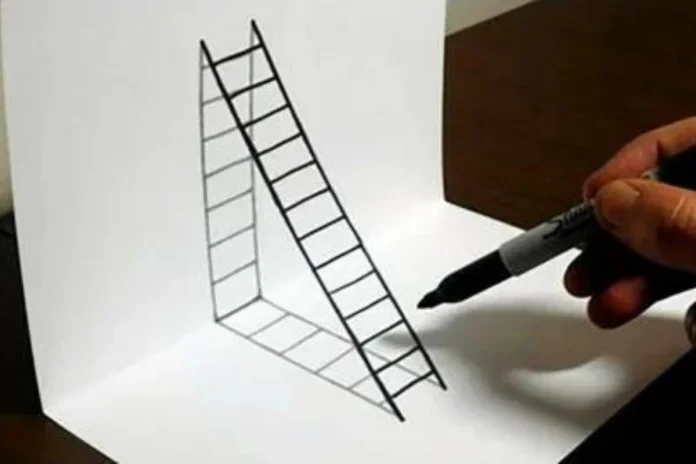In a world often dominated by advanced digital technologies and 3D graphics, the art of 2D drawings stands as a testament to the enduring power of simplicity and imagination. With just a pen or pencil in hand, artists embark on a journey where every line becomes a story, and every stroke breathes life into a new creation.
The Beauty of Lines:
At its core, 2D drawing is a dance of lines. The artist’s hand moves gracefully across the canvas, leaving behind a trail of lines that come together to form shapes, figures, and landscapes. It’s a delicate balance of precision and fluidity, where each line holds the potential to convey emotion, depth, and meaning.
Unleashing Imagination:
Unlike the three-dimensional realm, 2D drawings invite the viewer to engage their imagination actively. With the absence of physical depth, the mind is free to wander and interpret the artwork in a myriad of ways. A simple sketch can evoke a range of emotions and narratives, making the viewer an integral part of the artistic experience.
Versatility in Mediums:
The beauty of 2D drawings lies not only in the images they create but also in the vast array of mediums artists can choose from. Whether it’s the classic charm of graphite on paper, the vibrant hues of colored pencils, or the bold strokes of ink, each medium brings its own unique character to the art form. The choice of medium becomes a creative decision that shapes the final expression of the artist’s vision.
Timelessness in a Digital Age:
In an era dominated by digital art and virtual reality, the enduring appeal of 2D drawings is a testament to their timeless nature. While technology continues to advance, the simplicity of pencil on paper or pen on canvas remains a grounding force. It harkens back to a fundamental connection between the artist and their tools, where the tactile sensation of creation is an irreplaceable part of the artistic process.
A Personal Expression:
Every 2D drawing is a personal expression, a glimpse into the artist’s mind and soul. It captures moments of inspiration, fleeting thoughts, and intricate details that might go unnoticed in the hustle of everyday life. The artist’s hand becomes a storyteller, and the canvas a stage where narratives unfold through the language of lines.
The Art of Precision:
Within the seemingly simple act of drawing lines lies a world of precision and skill. Artists master the art of controlling the pressure on their tools, creating variations in line thickness and shading that add depth and dimension to their work. It’s a meticulous craft that demands patience and a keen eye for detail. Every stroke is a decision, every line a deliberate choice that contributes to the overall composition.
Embracing Minimalism:
2D drawings often embody the principles of minimalism, proving that less can indeed be more. Stripping away the distractions of extra dimensions, artists distill their ideas into the purest form. The use of negative space becomes as crucial as the lines themselves, allowing the viewer’s mind to fill in the gaps and complete the visual narrative. In the simplicity of a well-executed line drawing, complexity finds its elegant counterpart.
The Power of Black and White:
While color can be a powerful tool in an artist’s palette, the simplicity of black and white in 2D drawings holds a unique allure. It accentuates contrasts, highlights details, and focuses the viewer’s attention on the essentials. In the absence of color, the artist relies on the interplay of light and shadow, creating a visual language that speaks volumes without uttering a single hue.
From Sketch to Masterpiece:
The journey of a 2D drawing often begins with a humble sketch—a raw, unfiltered expression of the artist’s initial idea. These sketches capture the spontaneity of the creative process, revealing the artist’s thought progression and the evolution of the final composition. It’s a glimpse into the behind-the-scenes magic, where ideas take shape before blossoming into fully realized masterpieces.
Reviving Traditional Techniques:
While the digital age has ushered in a new era of artistic possibilities, there’s a resurgence of interest in traditional 2D drawing techniques. From charcoal to ink, artists are rediscovering and revitalizing age-old methods, infusing them with a contemporary twist. This blending of the old and the new pays homage to artistic roots while pushing the boundaries of what is possible in the realm of 2D art.
A Universal Language:
One of the most remarkable aspects of 2D drawings is their ability to transcend cultural and linguistic barriers. Regardless of where an artist hails from, the language of lines and shapes communicates universally. A simple doodle or an elaborate illustration can resonate with people across the globe, fostering a sense of connection through the shared appreciation of visual storytelling.
In essence, 2D drawings are not confined to the dimensions of paper or canvas; they are portals to worlds of creativity, imagination, and human expression. As we celebrate the timeless artistry of 2D drawings, we embrace a form that, despite its simplicity, continues to evolve and inspire, proving that the magic of lines and imagination knows no bounds.
Conclusion:
2D drawings stand as a testament to the enduring power of artistic expression. They are not just static images on a canvas; they are windows into worlds created by the human mind. In a symphony of lines and imagination, 2D drawings continue to weave stories that transcend time and connect us to the essence of creativity itself.

